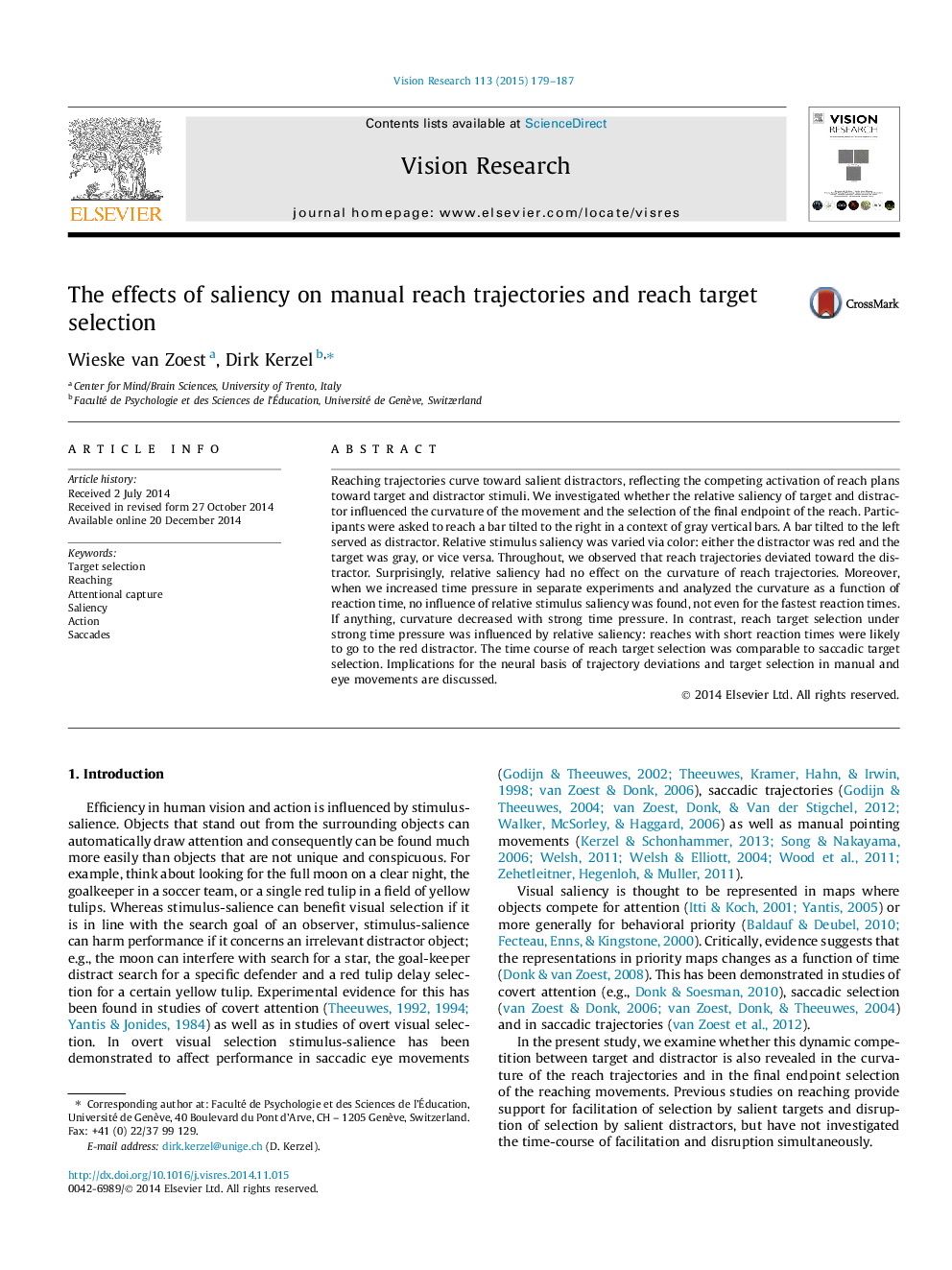| کد مقاله | کد نشریه | سال انتشار | مقاله انگلیسی | نسخه تمام متن |
|---|---|---|---|---|
| 4033636 | 1263364 | 2015 | 9 صفحه PDF | دانلود رایگان |
• Reaching movements veered toward the distractor.
• The curvature of reaches did not depend on distractor saliency.
• The curvature of reaches did not increase with short reaction time.
• Reaches with short reaction times went to the salient distractor.
• Saliency affects target selection, but not the execution of reaching movements.
Reaching trajectories curve toward salient distractors, reflecting the competing activation of reach plans toward target and distractor stimuli. We investigated whether the relative saliency of target and distractor influenced the curvature of the movement and the selection of the final endpoint of the reach. Participants were asked to reach a bar tilted to the right in a context of gray vertical bars. A bar tilted to the left served as distractor. Relative stimulus saliency was varied via color: either the distractor was red and the target was gray, or vice versa. Throughout, we observed that reach trajectories deviated toward the distractor. Surprisingly, relative saliency had no effect on the curvature of reach trajectories. Moreover, when we increased time pressure in separate experiments and analyzed the curvature as a function of reaction time, no influence of relative stimulus saliency was found, not even for the fastest reaction times. If anything, curvature decreased with strong time pressure. In contrast, reach target selection under strong time pressure was influenced by relative saliency: reaches with short reaction times were likely to go to the red distractor. The time course of reach target selection was comparable to saccadic target selection. Implications for the neural basis of trajectory deviations and target selection in manual and eye movements are discussed.
Journal: Vision Research - Volume 113, Part B, August 2015, Pages 179–187
